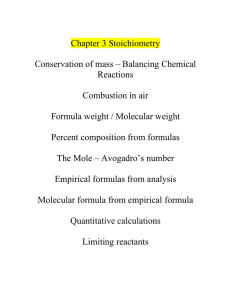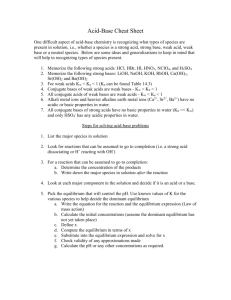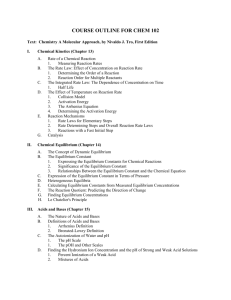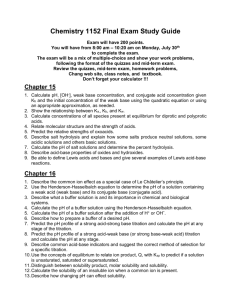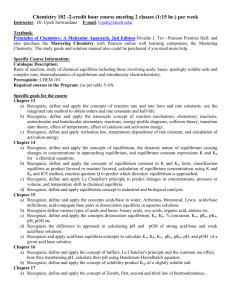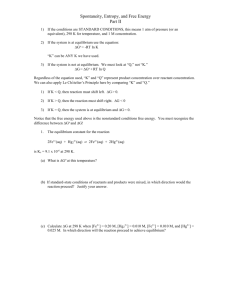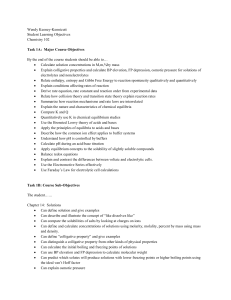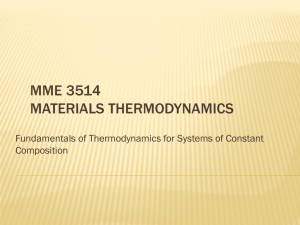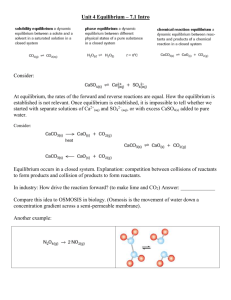CHEMISTRY 162 - Seattle Central College
advertisement
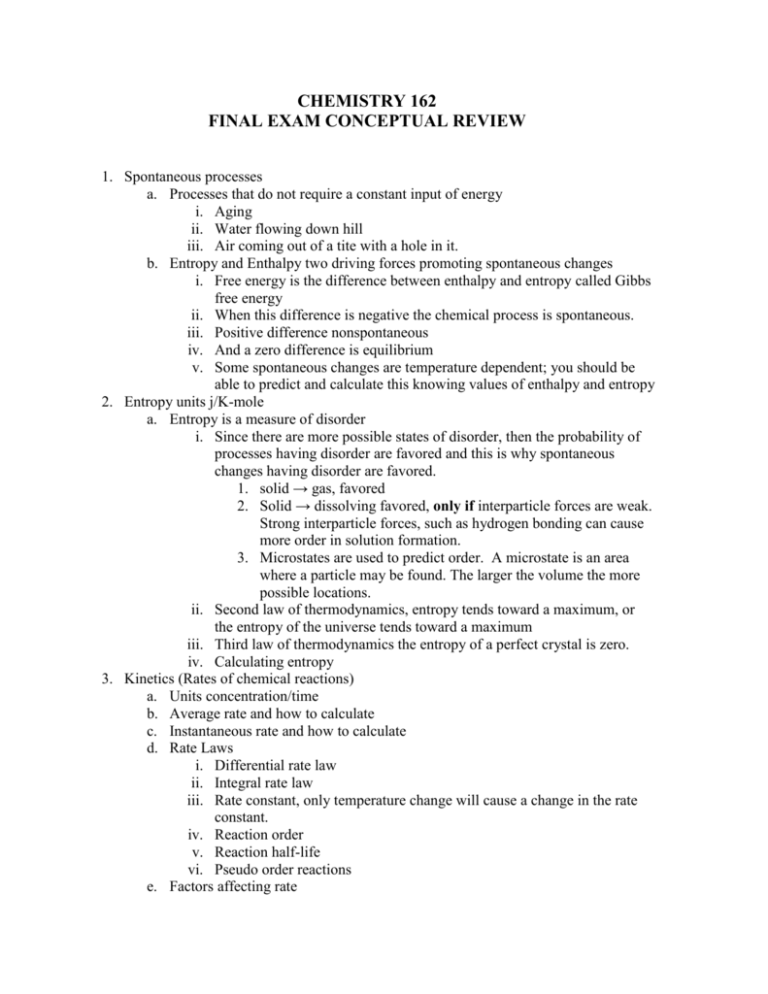
CHEMISTRY 162 FINAL EXAM CONCEPTUAL REVIEW 1. Spontaneous processes a. Processes that do not require a constant input of energy i. Aging ii. Water flowing down hill iii. Air coming out of a tite with a hole in it. b. Entropy and Enthalpy two driving forces promoting spontaneous changes i. Free energy is the difference between enthalpy and entropy called Gibbs free energy ii. When this difference is negative the chemical process is spontaneous. iii. Positive difference nonspontaneous iv. And a zero difference is equilibrium v. Some spontaneous changes are temperature dependent; you should be able to predict and calculate this knowing values of enthalpy and entropy 2. Entropy units j/K-mole a. Entropy is a measure of disorder i. Since there are more possible states of disorder, then the probability of processes having disorder are favored and this is why spontaneous changes having disorder are favored. 1. solid → gas, favored 2. Solid → dissolving favored, only if interparticle forces are weak. Strong interparticle forces, such as hydrogen bonding can cause more order in solution formation. 3. Microstates are used to predict order. A microstate is an area where a particle may be found. The larger the volume the more possible locations. ii. Second law of thermodynamics, entropy tends toward a maximum, or the entropy of the universe tends toward a maximum iii. Third law of thermodynamics the entropy of a perfect crystal is zero. iv. Calculating entropy 3. Kinetics (Rates of chemical reactions) a. Units concentration/time b. Average rate and how to calculate c. Instantaneous rate and how to calculate d. Rate Laws i. Differential rate law ii. Integral rate law iii. Rate constant, only temperature change will cause a change in the rate constant. iv. Reaction order v. Reaction half-life vi. Pseudo order reactions e. Factors affecting rate i. Temperature ii. Concentration iii. Surface area iv. Catalyst v. Nature of reactant f. Arrhenius equation i. Energy of activation ii. Frequency factor iii. Two point Arrhenius equation 1. Eliminates the y-intercept 2. Derived by subtracting two equations at different temperatures. g. Reaction mechanisms i. Elementary steps ii. Slowest step determines the rate law iii. Catalysts iv. Reactive intermediates h. Reaction Quotient Q i. Q>K, means shift left ii. Q<K, means shift right iii. Q=K only at equilibrium 4. Equilibrium a. Rate forward reaction equal to the rate of the reverse reaction b. Equilibrium constants Kc, Kp c. Equilibrium expression: products/reactants i. Solids and liquids do not play the equilibrium game ii. Relation between kp and kc iii. How does the equilibrium constant change by 1. Doubling the coefficients of the expression 2. Reversing the expression d. LeChatelier’s Principle i. Changing concentrations ii. Pressure changes iii. Temperature changes 1. Constant changes if temp goes up 2. Does not change if heat is added isothermally iv. Effect of catalyst e. Thermodynamics and equilibrium i. ΔG= 0 for equilibrium ii. ΔG = ΔG° +RT lnQ at equilibrium ΔG =0, so ΔG° = -RT lnK iii. Different temperatures different K, ΔG° same or different 5. Acids Bases and Salts a. Weak acids/bases are in equilibrium b. Salts are not in equilibrium, unless made from weak acid or base i. Weak acid + strong base creates a basic salt ii. Weak base + strong acid creates and acidic salt iii. Weak acid + weak base creates neutral, acidic, or basic salt. c. d. e. f. g. h. i. j. k. l. 1. If Ka of the weak acid is larger than the Kb, then the salt is acidic 2. If Ka of the weak acid is smaller than the Kb, then the salt is basic 3. If Ka = Kb then a neutral salt is formed Conjugate acids of weak bases are relatively strong (Compared to the acid) Conjugate bases of weak acids are relatively strong (Compared to the base) Cannot make strong acids or bases Auto ionization of water and kw Water ionization does not affect pH/pOH unless the dilute solutions have concentrations on the order of 10-14 Acid strength and structure i. Ion size in a group ii. Electronegativity in a period iii. Relative to the ratio of H to O pH of salt solutions, KaKb = 10-14 be sure to use the correct one. Very common mistake on midterm #2 Buffers and the Henderson Hesselbach i. Molarity or moles since same volume ii. Only works for both HA and A- present iii. Be sure to determine excess acid or base iv. pH and pOH for strong acids and bases depend only their concentration Solubility equilibria Titration i. End point ii. Equivalence point iii. Analate iv. Titrant v. Indicator
